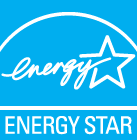Energy Star Program
 The Energy Star Program from U.S. Environmental Protection Agency (EPA) and the U.S. Department of Energy is designed to encourage energy efficient products and practices. The program was started in 1992 by the US EPA as a voluntary labeling program for computers and monitors. Other office equipment was added in 1995. The program was expanded in 1996, with the US Department of Energy. It now covers major appliances, office equipment, lighting, home electronics, new homes, commercial and industrial buildings.
The Energy Star Program from U.S. Environmental Protection Agency (EPA) and the U.S. Department of Energy is designed to encourage energy efficient products and practices. The program was started in 1992 by the US EPA as a voluntary labeling program for computers and monitors. Other office equipment was added in 1995. The program was expanded in 1996, with the US Department of Energy. It now covers major appliances, office equipment, lighting, home electronics, new homes, commercial and industrial buildings.As well as an extensive web site, there are ENERGY STAR Podcasts.
Products Covered
- Appliances
- Heating & Cooling
- Home Envelope
- Home Electronics
- Office Equipment
- Lighting
- Other Commercial Products
New Product Specifications are in development include:
- enterprise servers.
- solid state lighting luminaires (led lights)
- residential water heaters
- commercial griddles
- laboratory grade refrigerators and freezers
- Computers
- Computer monitors
- External power adapters
- TVs
- set-top boxes
- VCRs
- Compact Fluorescent Light Bulbs (CFLs)
- residential light fixtures
- Imaging equipment
- programmable thermostats
- clothes washers
- residential ventilating fans
- windows, doors and skylights
- Furnaces
- commercial solid door refrigerators and freezers
It should be noted that many of the products listed under "Office Equipment" are also used in the home:
- Computers
- Notebook Computers/Tablet PCs
- Monitors
- External Power Adapters
- Printer, Scanners, and All-in-Ones
Computers must meet energy use guidelines in: standby, active, and sleep modes. Computers must also have an efficient internal power supply. Power management features are required for a low-power “sleep mode” after a designated period of inactivity.
Energy Star standards are volintary, but have been made mandatory for some US Government purchasing:
- The Energy Policy Act of 2005 requires ENERGY STAR or other efficient products. Notice of Proposed Rule provides guidance on this.
- Executive Order 13423 requires agencies to activate ENERGY STAR “sleep” features on computers and monitors. The Council on Environmental Quality issued instructions on this.
Computer monitors requirements include On, Sleep, and Off Modes :
- On Mode: the maximum allowed power according to resolution.
- Sleep Mode: 2 watts or less.
- Off Mode: 1 watt or less.
Labels: Climate Change, Green IT, Greenhouse Effect


0 Comments:
Post a Comment
Links to this post:
Create a Link or bookmark with Digg, del.icio.us, Newsvine or News Feed
<< Home